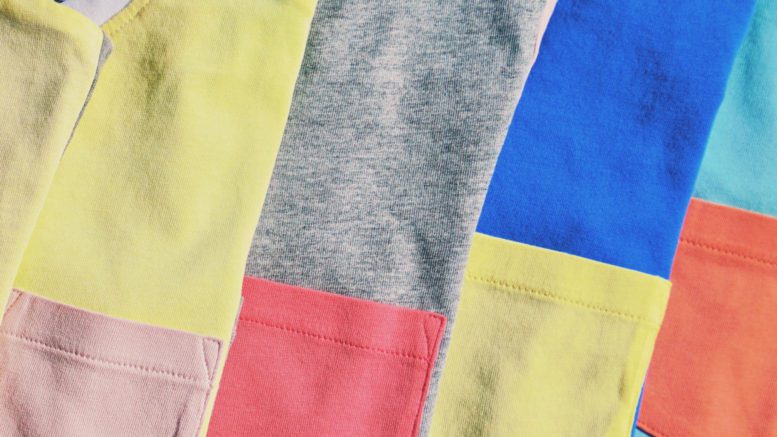The idea of saving the environment by buying new clothes seems far-fetched, but a Toronto-based kidswear brand called Nudnik is among those making it possible.
The company sells colourful T-shirts for children aged 1 to 6 made with 100 per cent organic cotton fabric remnants that would otherwise end up in landfills.
For $20, customers receive a shirt made from cut-off fabric from the textile industry that would otherwise end up in landfills.
Nudnik was founded in 2016 by twin sisters Alexandra and Lindsay Lorusso.
“One of the biggest things that parents fear is the future planet for their kids. What kind of planet are they going to inherit? And then, what planet are their kids going to inherit?” Alexandra said in an interview.
Watch Alexandra Lorusso talk about Nudnik’s philosophy:
Data released by FashionUnited, a platform for the global fashion community, shows Canada has more than 24,000 fashion companies that sell clothing, shoes and accessories, which adds up to about $43 billion. When there is so much choice, it’s easy for shoppers to unwittingly choose companies that damage the environment.
New clothes made with old materials
Even though sustainability in clothing manufacturing may seem like a new worldwide trend, some Canadian eco-conscious brands like Preloved has been on the market for decades.
Preloved uses vintage materials to make new pieces of clothing. The brand, which celebrates its 25th anniversary this year, manufactures all its products in Canada.
“I always loved having vintage clothing. It is an amazing way of being unique. But sometimes vintage clothing needs to be altered to have a more current look and a better fit. So, that’s my philosophy behind Preloved,” says Julia Grieve, a co-founder and CEO of the brand.
Grieve says that back in 1995, many customers felt confused when brands like Preloved used old materials. But now shoppers demand it.
“In the beginning, nobody understood what was happening. People were saying, ‘I don’t get it. Is it used? Or is it new?’” she said.
“But now people are educated. Customers completely understand it. We don’t have Greta Thunberg out there for no reason.”
Get new items by exchanging clothes with each other
Canadians buy too much clothing. Research conducted by the Ontario Textile Diversion Collaborative, a group that encourages textile recycling, says people generally own 60 per cent more clothing today than we did 20 years ago.
Some people are opting out of always buying new and are holding clothing swaps to add new items to their wardrobes instead. Swapping allows its participants to exchange unwanted clothes for new-to-you items.
There are two main types of swaps: at private homes with a few people in attendance and large coordinated swaps that require participants to purchase a ticket to enter them.
Toronto resident Katrina McGuire gets most of her clothes this way.
“People have more questions about what it is they are buying, and what does it mean when something is labelled sustainable?” said McGuire, one of the administrators of a Facebook group called Zero Waste Toronto.
Read more on the Toronto Observer:
- The Right Side boutique shows ethical fashions at show
- Designer believes everything old can be new in fashion
- Fashion enthusiasts show support for local designers
Members of the Zero Waste Toronto Facebook group post information on ways to make a person’s lifestyle more sustainable: from upcoming clothing swaps to tips on how to recycle old household items.
The group has more than 8,000 members.
McGuire says that they have seen a 300 per cent increase in the number of members in the last year.
It’s clear the demanded for more sustainable fashion is growing.
Nudnik co-founder, Alexandra Lorusso wants to inspire people to look at clothing labels the same way they look at the ingredients list on food packages.
“We have a focus on teaching people what ingredients are actually in your clothing and how to recognize the bad ones versus the good, and what that means for the afterlife of your clothes,” said Lorusso.

